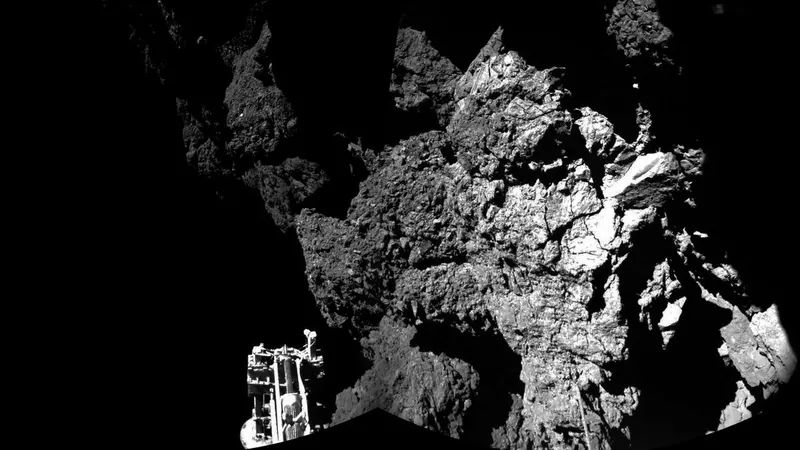
Celebrating a Decade of Discovery: The Historic Touchdown of Philae on Comet 67P
2024-11-16
Author: Yu
Introduction
On November 12, 2014, a monumental event etched itself into the annals of space exploration: the landing of Philae, the lander of the European Space Agency's (ESA) Rosetta mission, on the surface of a comet. This remarkable achievement marked the first time a human-made object had made contact with a comet, in this case, the 4.6 billion-year-old Comet 67P/Churyumov-Gerasimenko.
The Journey of Rosetta
After an astonishing 10-year journey traversing over 310 million miles (about 500 million kilometers) through our solar system, Rosetta deployed Philae, which descended gracefully onto the comet’s surface. Equipped with CIVA (Comet Infrared and Visible Analyser) cameras, Philae captured breathtaking images, providing the scientific community with unprecedented insights into the origins of comets and their connection to the foundation of our solar system.
Objectives and Descent
The mission's principal objective was to unravel the mysteries behind the formation of comets and their interplay with interstellar material. Philae's descent lasted a suspenseful seven hours as it detached from Rosetta, gathering vivid imagery of the landscape that lay ahead. The landing site, humorously dubbed 'Agilkia,' was carefully selected from countless images scrutinized by scientists, landing on a seemingly smooth patch on the smaller lobe of the comet.
Challenges during Landing
However, challenges loomed overhead. Just before the launch, it was revealed that Philae's active descent system—a critical feature designed to prevent a rebounding touchdown—was malfunctioning. Instead of relying on this feature, Philae was outfitted with a fallback system involving harpoons and ice screws on its feet, designed to anchor it to the comet's surface upon touchdown.
Successful Landing and Discoveries
Against all odds, Philae made a successful landing on Agilkia, recording the vibrations of its historic touchdown. Yet, the excitement was tempered when it was discovered that the harpoons had failed to fire, resulting in a dramatic series of movements across the surface. Remarkably, this allowed Philae to collect data from multiple locations, a silver lining to an unplanned situation.
Groundbreaking Findings
One of the most groundbreaking findings occurred after Philae collided with a cliff, leading to a unique 'stamp' in the ancient icy-dusty surface. ESA scientists described this remarkable find as revealing a boulder that was fluffier than the foam atop a cappuccino—a startling porosity of around 75%.
Communication and Legacy
After successfully transmitting scientific data for an intense 57 hours, communication ceased as Philae's battery drained, challenging mission teams to locate it again. It wasn't until almost two years later, on September 2, 2016, that the spacecraft OSIRIS rediscovered Philae through images captured by its narrow-angle camera.
Conclusion
As we celebrate ten years since this awe-inspiring event, Philae's saga continues to inspire future missions and ignites curiosity about the cosmos. The achievements of the Rosetta mission not only enhanced our understanding of cometary science but also opened new pathways for exploring the origins of life on Earth. Who knows what other cosmic secrets await discovery in the vast expanse of space?

 Brasil (PT)
Brasil (PT)
 Canada (EN)
Canada (EN)
 Chile (ES)
Chile (ES)
 Česko (CS)
Česko (CS)
 대한민국 (KO)
대한민국 (KO)
 España (ES)
España (ES)
 France (FR)
France (FR)
 Hong Kong (EN)
Hong Kong (EN)
 Italia (IT)
Italia (IT)
 日本 (JA)
日本 (JA)
 Magyarország (HU)
Magyarország (HU)
 Norge (NO)
Norge (NO)
 Polska (PL)
Polska (PL)
 Schweiz (DE)
Schweiz (DE)
 Singapore (EN)
Singapore (EN)
 Sverige (SV)
Sverige (SV)
 Suomi (FI)
Suomi (FI)
 Türkiye (TR)
Türkiye (TR)
 الإمارات العربية المتحدة (AR)
الإمارات العربية المتحدة (AR)